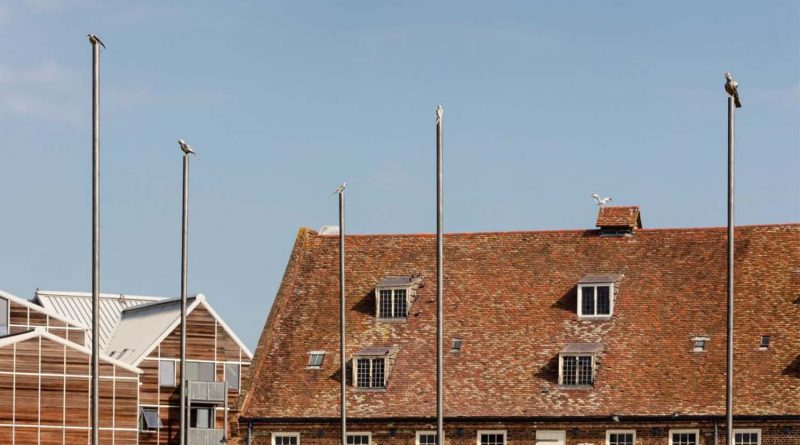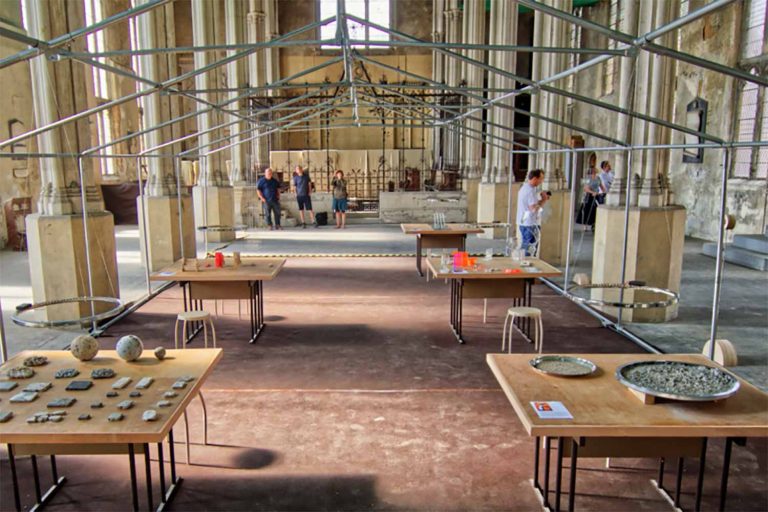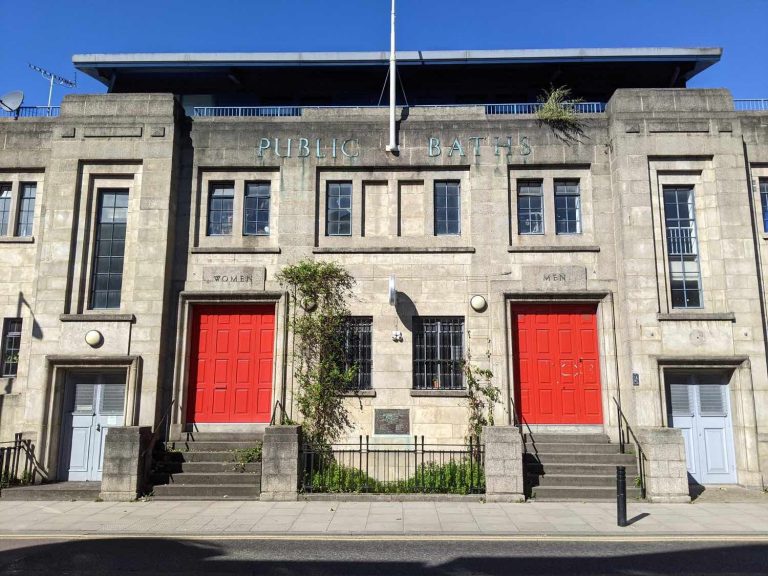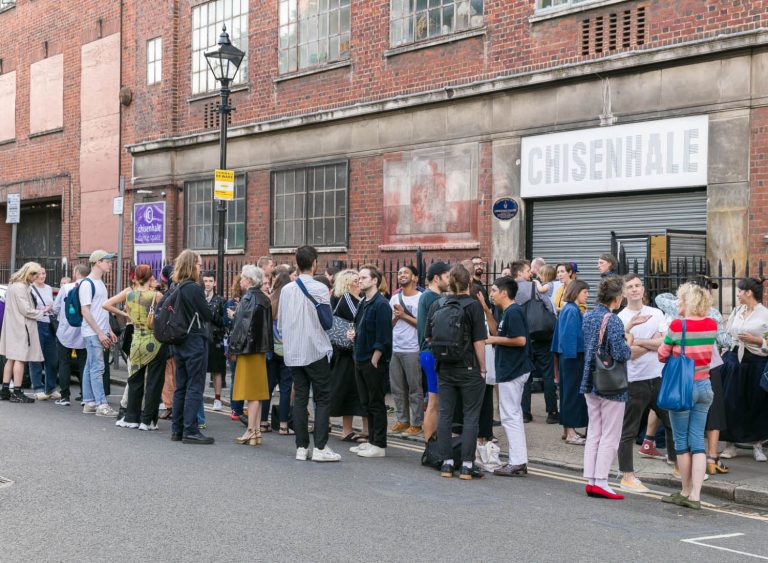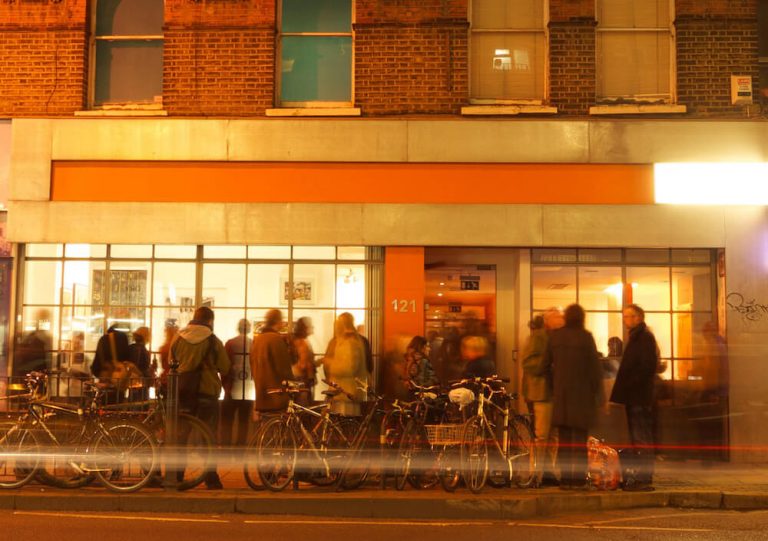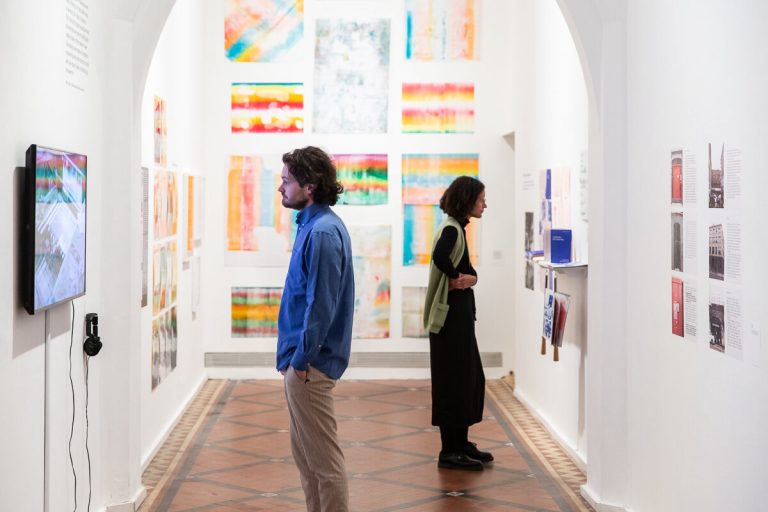The Line art walk: From Tracey Emin to Antony Gormley
The evolving art of The Line art walk creates one of East London’s most thought-provoking attractions.
Beginning in Queen Elizabeth Olympic Park, The Line art walk winds its way along East London’s parks and waterways, eventually reaching the O2 Arena in Greenwich. It is a quiet route that loosely follows the line of the Greenwich Meridian, hence its name.
Since opening in 2015, The Line has undergone a series of transformations, including the addition of work by three women artists – Madge Gill, Tracey Emin and Virginia Overton. These new installations are a celebration of women and the natural world.
Emin’s A Moment Without You, a series of five sculpted bronze birds atop high poles, is the artist’s only public sculpture on display in London. It is just one of the works that make up one of East London’s most thought-provoking attractions.
The Line is the brainchild of London-born art dealer Megan Piper, who joined forces with the late ‘regeneration expert’ Clive Dutton in 2014 to raise capital for the project. It did not receive any public funding so money was raised via crowdfunding and fundraising art auctions. ‘I am hoping the auctions — along with the crowdfunding project which raised £140,000 — will mean Londoners have a sense of ownership of The Line,’ Piper said at the time.
The project opened in 2015 with inaugural loans from Damien Hirst, Eduardo Paolozzi and Thomas J Price. The aim was to bring existing works out of storage, back into the public eye. Some of the sculptures – such as Hirst’s Sensation – were loaned to the project on a temporary basis and have since disappeared from view.
The Line begins in Stratford with Anish Kapoor’s ArcelorMittal Orbit twisting into the air, altering the skyline. Wound through this coiling lattice structure is Carsten Höller’s The Slide, the world’s longest tunnel slide. It was Boris Johnson, then London’s Mayor, who in 2009 dreamt up this giant sculpture in anticipation of the Olympic Games.
Meeting the Indian steel magnate Lakshmi Mittal in the cloakrooms of the World Economic Forum in Davos, Johnson proposed a monument to rival the Eiffel Tower. ‘Our conversation took about 45 seconds,’ Johnson later wrote. ‘I explained the idea, which took 40 seconds. “Great. I’ll give you the steel,” [Mittal] said, and that was it.’
Anish Kapoor was selected to design the sculpture, which was eventually completed in 2012, just in time for the London Olympics. The monument has since become one of The Line’s permanent sculptures, a route that also comprises an ‘evolving programme of art installations’ that are only on show for a limited time.
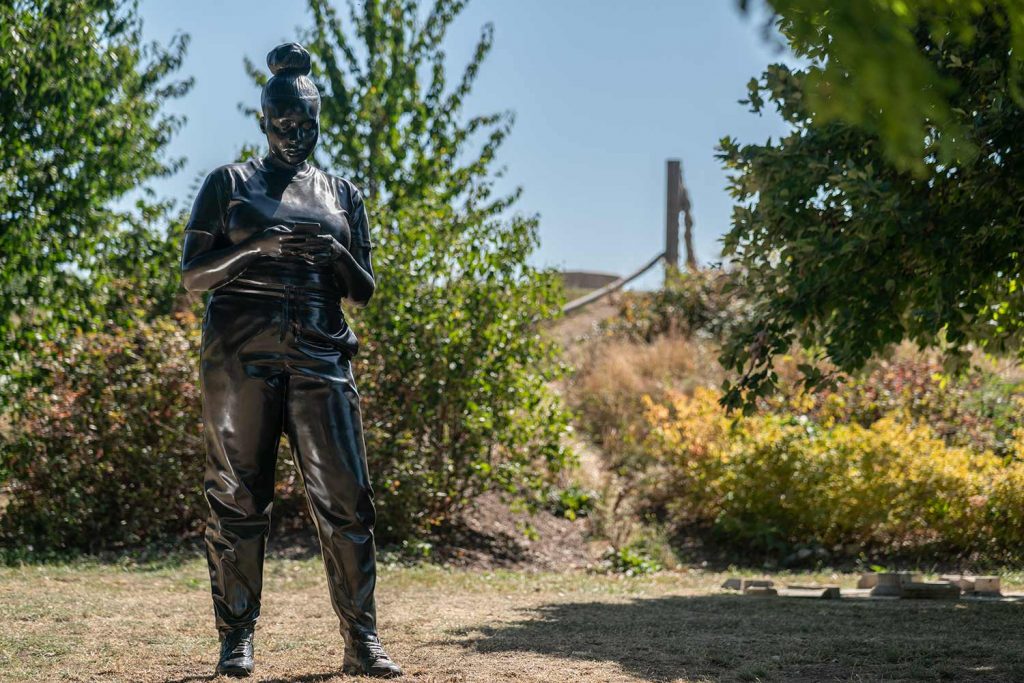
Some key pieces to look out for are Reaching Out by Thomas J. Price, along with Antony Gormley’s Quantum Cloud and Alex Chinneck’s A Bullet from a Shooting Star.
Found on Three Mills Green, Reaching Out is a bronze statue depicting a young black woman staring at her phone. At nine feet high, Price’s sculpture towers over passersby, engaging with burning questions of recognition and monumentalisation in British society.
You’ll find Emin’s sculptures at the nearby Three Mills, along with Virginia Overton’s Untitled (Juniper), a weathervane attached to the building’s roof. Crowned by a juniper tree, Overton’s sculpture references the prolific gin production at Three Mills, once one of the leading suppliers for London’s gin craze.
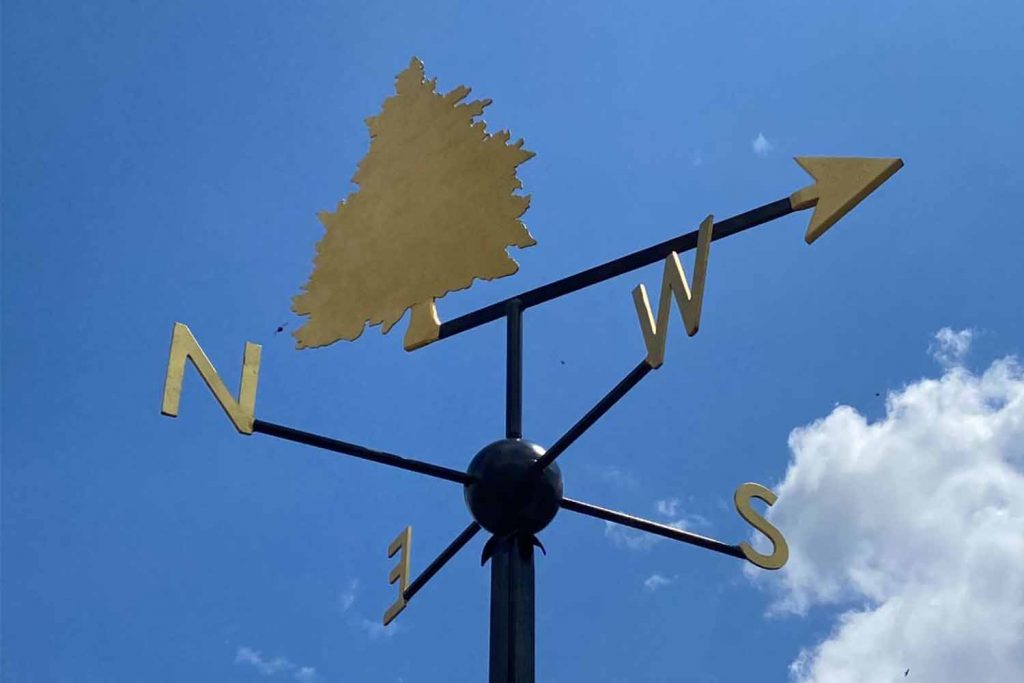
A Sculpture by Abigail Fallis mark the route south, which consists of 22 shopping trolleys in the shape of a double helix. The work was commissioned by a supermarket chain in 2003, and served to raise awareness of muscular dystrophy.
At the nearby Royal Docks, Laura Ford’s sculpture Bird Boy floats on a pontoon. This sculpture, depicting a small boy in a bird costume, exploring themes of childhood, vulnerability and loss. Visitors can afterwards cross the River Thames using a cable car, where Larry Achiampong’s audio artwork Sanko Time can be heard via the Walk the Line website or digital guide.
On the North Greenwich Peninsula sits Gormley’s Quantum Cloud, an explosion of hollow steel beams suspended over the water. Following the path of the Thames, participants will then pass work by a variety of contemporary sculptors. At the southern end of the route is Chinneck’s A Bullet from a Shooting Star, in which an inverted, full-size electricity pylon stands on its tip.
Madge Gill’s Nature in Mind was added to the collection in 2021, an outdoor exhibition comprised of five artworks situated across various different sites around Newham. The artist lived and worked in Newham for most of her adult life, and this exhibition celebrates the inspiration Gill found in nature. Some of her pieces are vast; over the River Lea you’ll find a 60m section of one of her drawings on the side of a bridge. Her work is marked by repetitive floral patterns, geometric forms and swirling shapes, and her bold use of colour brings life and vibrancy to their urban surroundings.
The newest addition to the walk is Rana Begum’s site-specific outdoor sculpture, No.1104 Catching Colour, which was launched on the 9 April, on London City Island. The sculpture is created by folded mesh layers that interplay with light and shadow. Her piece is complemented by a creative dance programme for local schools and communities, run by English National Ballet and Akademi, a new South Asian dance company.
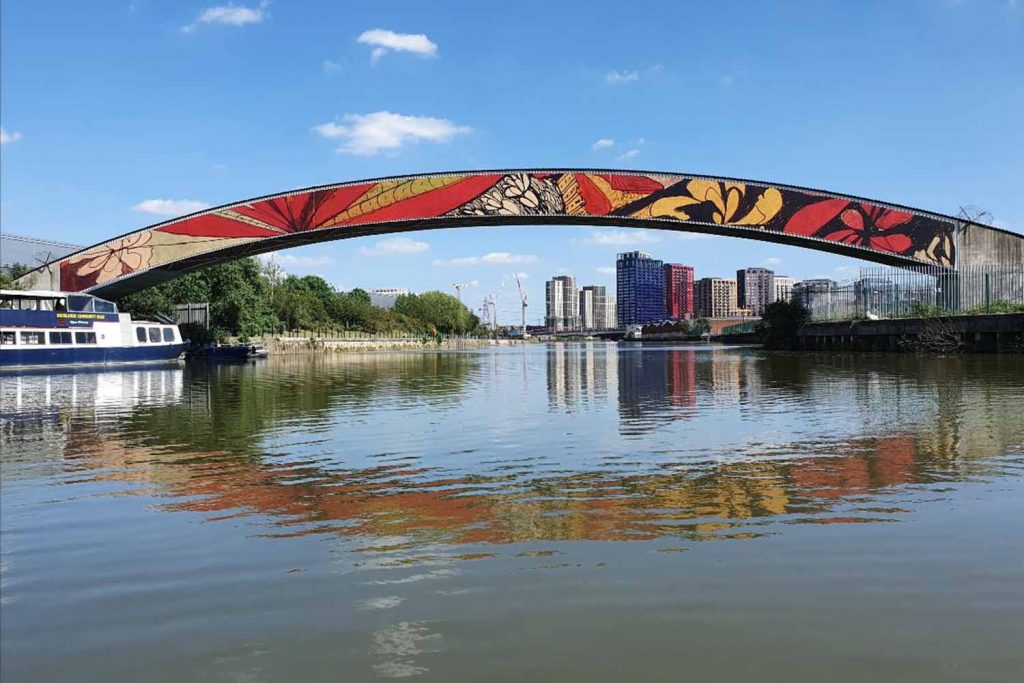
Created in the wake of the Olympics, this art trail is a phenomenon peculiar to East London, providing a lens through which to view the complex relationship between art and urban regeneration schemes.
Critics argue that The Line is a form of ‘art-washing’, using art to render so-called ‘regeneration’ strategies (which aim to drive up land value, often displacing longstanding communities in favour of wealthy buyers) more palatable to the public. Defenders of The Line argue the project is ‘rooted in a commitment to improving the quality of life for people in urban environments.’
You can tell a lot about a society’s values by looking at the objects it deems worthy of public display. Exhibiting art on London’s streets not only foregrounds culture as a central tenet of British society but also integrates art into the everyday life of passersby. However, Boris Johnson’s ArcelorMittal Orbit has cost the British taxpayer £10,000 a week to maintain – a salient reminder that public art can also pay homage to less venerable impulses, from vanity to greed.
Whatever your perspective on the trail, walking The Line makes for an interesting day out. This part of East London is one of the most rapidly developing areas in the UK, altering with every day that passes. The Line threads a route through this changing cityscape, encouraging us to engage with the art on an aesthetic level and, perhaps inadvertently, on a political level too.
If you enjoyed reading about The Line art walk, you might like to know about the battle to save Hackney Wick’s street art.

